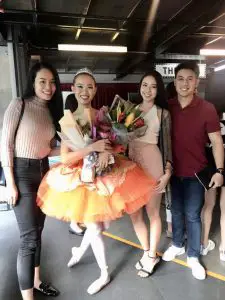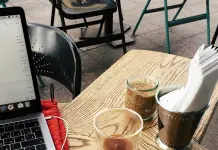In Malaysia, there are a few types of education systems we can choose from. There are the public (government) schools, Chinese/Tamil vernacular schools, private schools, and international schools to name the least. However, in recent years, alternative education or other private learning centres have mushroomed, and are often mistaken or lumped together as “homeschooling”. I finished my last two years of secondary education at one of these learning centres, and this is my experience.
What Is Alternative Education?
Alternative education is most often confused as a form of homeschooling, but since children “attend school” in learning centres, this isn’t strictly accurate. These learning centres usually offer international curriculum, and some may be affiliated with religious institutions such as churches. Their timetable could be flexible and varied, and students may not need to wear uniforms, though most often there is a dress code to adhere to. Depending on each centre, they could also offer other (non-academic) activities/classes, and most often their class sizes are smaller than the ones in schools. Technically, they aren’t “schools”, but learning still occurs. In short, alternative education is a form of private learning centre which doesn’t check any box of education available in Malaysia.

What Is Homeschooling?
Very simply put, homeschooling is where one “attends school” at home. Parent(s) are usually the main educators, and children learn from them at home. Homeschooling is legal in Malaysia, but you have to apply for school exemption for kids aged 7-12, as primary education is compulsory in Malaysia. Sometimes, there can be a network of homeschooling parents, and they take turns to teach subjects which are their forte. For homeschooling kids, school is home, and home is school. They may, of course, be enrolled in a variety of other classes outside, but as far as “main” academic education is concerned, they learn at home.

My Experience At An Alternative Education Learning Centre
I went to one of these alternative education learning centres when I was 16, after my PMR (yes, it was still PMR back then, and yes, I do feel very old), and I finished my secondary education there. My mum decided to enrol me there and insisted that I only attend twice a week, while I practiced my piano and violin the rest of the days. And surprise! I became a writer instead. (No but I’m still teaching music so my qualifications aren’t a complete waste.) I completely hated it at first in the way teenagers think their life is wrecked with a single change they didn’t like, but I grew to like it over time, and now those two years have become fond, important memories. Also, just for context, I attended a Chinese primary school (6 years), and went on to a government secondary school which also included Chinese (SMJK; 3 years) prior to this.

A Typical School Day Be Like
School hours were from 9 am to 3 pm, but I still got up at the crack of dawn to compensate for travelling and the morning jam. I should also mention that the learning centre I went to is Christian-based, so each morning started with an assembly of sorts with your own classroom teacher reading from something called “The Daily Bread”, and discussing about it. After that, you set your work goals in a green booklet they provided, and you’re expected to achieve (or exceed) your goals at the end of the day. It’s quite a good way to keep track of how much work you do, really. If you don’t achieve your goals, there’s no punishment, I think. You simply make up for it the next day. Lunch is provided by way of a caterer.

Syllabus & Subjects
This learning centre followed an American curriculum, and there were five main subjects: Language Arts (LA; which is basically English), Maths, Science, History & Geography (H&G), and Bible. There are also Bahasa Malaysia (BM) classes, an allocated time slot for P.E., Scholastic Aptitude Test (SAT) classes, and Intensive English Writing (IEW) classes besides the “regular” subjects. I didn’t have to take BM classes because I’d acquired a credit during PMR; I’m not athletic; but I went for the SAT classes (because I actually needed that to get into uni); and I absolutely loved the IEW classes, because they were writing classes.
The workbooks were called Lifepacs, and each book had its own test called the Lifepac Test. Each grade consisted of 10 books, and book 10 is basically a sum-up of the entire grade. (By the way, the highest grade is grade 12.) Students who enter would be given a diagnostic test to determine from which grade to start, and how many books to do in that current grade before moving on. Personally, I found LA and H&G the most interesting subjects. LA because it was English, and H&G because it was my first introduction to world history and I was endlessly fascinated by the Boston Tea Party and the French Revolution, never mind that I don’t remember a single thing now.

The Set Up
The set up here wasn’t a typical classroom setting. You had a classroom, but our “class” basically spanned the entire floor, and it was open. There were five classes on my floor, and each class had an average of 15-20 students. The tables were built so that it was like a cubicle, supposedly designed to eliminate distraction so that students could focus. You could feel like you were holed up in a white box though, sometimes. There was also a flag-raising system with two flags provided; you raised one when you needed academic assistance and the teacher would come over to your cubicle or call your name, and you raised the other for general things, like needing to take a test because you’ve finished your book, or to go to the toilet.
Classes were also not divided by age, but loosely on academic performance, though if there was a clear pattern, I didn’t see it. Learning was highly self-paced, so if you had a knack for studying, you could graduate earlier, and apply for university earlier, if you so desired. We didn’t have uniforms, but were required to wear long pants, shoes, and sleeved shirts (which later on became collared shirts), for both girls and boys. Girls could also wear skirts or dresses, but they had to be below the knee, if memory serves me well. For P.E., we were allowed to wear shorts, but they also had to be a certain length. No dyed hair or multiple ear piercings too, if I’m not mistaken. Of course, a lot could change; this was back in 2009.

Thoughts & Takeaways
I enjoyed my time here, because it provided me with a totally different learning system and environment. I found out just how much I could do when I wasn’t “assigned” homework, and what I wanted to do with myself when left to my own devices. The subjects covered were all interesting to me (with the exception of maths), and I learned a great deal thanks to SAT and IEW classes, not to mention picking up other small, but invaluable experiences. Last but not least, I also got to meet and be friends with people of different ages and backgrounds, and I’m happy to say we’re still friends today, and here are their experiences as well.
What Others Say
Bryan Yee
Started at 13, was there for 3 years before university.
My parents wanted a cheaper alternative to government school. There also weren’t as many international school options back then. Prior to this, I spent 6 years in a Chinese primary school, and loved every day of it! I liked that studying here was completely based on your own pace, which taught me autonomy at a young age. Your progress and learning was your responsibility, not the responsibility of your teachers. However, I think I did miss out on some of the more organized events/clubs, for example organized football competitions. While studying here, I felt that it was more similar to college/university than the “normal” schooling experience, in that you determined how and when you want to learn. Like with most things, the highlight for me is the friendships that are left in my memory. There is a unique network of friends that you are able to build in that environment.
I learned that hard work can get you ahead, and ultimately I am responsible for developing myself as an individual. Many memories I built there will stay with me the rest of my life.

Camen Leong
Started at 15, was there for 3 years before university.
My mum sent me there in hopes of a better environment, and for me to be more English-educated. Prior to this, I was in a Chinese primary school for 6 years, and a government secondary school for 2 years. I have to say I prefer the government school, actually. Though I will say that I enjoy the self-paced learning, and the bit about no school uniforms, as well as the goal-setting book. It feels more like going to the office than school, and I liked that. The cubicles restricted socialisation lots in my opinion, and P.E. could have been improved because there wasn’t a teacher around to help facilitate it. I was exposed to Bible study here, and the sports carnivals we had actually seemed more like a gathering of sorts (compared to government schools); it was more freestyle maybe due to organisational issues (sports carnivals featured many learning centres together to play off against each other). My favourite things have definitely got to be making the netball team, and subsequently winning first prize, end of the year carnivals, and the friends that I made, Yiing Zhi specifically.
The goal-setting has helped me with planning in general, and each day’s “The Daily Bread” actually helped me recognise the benefits of having a daily routine!

Grace Rundi
Started at 15, was there for 2 years before university.
Note: Grace’s experience describes her time at a different learning centre than the rest, though she did also start off at the same learning centre with us.
I started at this learning centre to make the switch from US-based curriculum to O-levels/IGCSE. I knew the teacher personally, and wanted to study in an environment that encouraged self-paced learning. Before joining alternative learning centres, I was at a Chinese primary school for 6 years. What I like best about the learning centre is that you can study at your own pace, which provides a lot of time flexibility. Teachers are also more focused on individuals since the class is smaller. However, there was a lack of system, and too much “free and easy” time led to students being too relaxed, and slacked too much between breaks. That said, due to small class size, the teacher can really focus on you and track your progress, which is great if you’re struggling or need help! I also got to take part in many activities outside of class, such as camping trips, P.E. which involves a different sport every week, and other inter-class activities where we as a “school” get to bond.
Thanks to this, I’m a more open-minded person. Alternative education is out of the norm, so joining one has encouraged me to always dare to try things out of the norm too. And also to be more disciplined because alternative learning relies on one’s consistency and determination so that you don’t slack in your studies.

He Who Must Not Be Named
Started at 15, was there for 4 years before university.
I went there because I had trouble following the curriculum in public school. I was particularly weak in maths and science, and had a history of learning deficiency. Before this, I was in public schools all through my primary years till form 2. What’s best about the learning centre was having a close-knitted community, as well as being able to learn independently. You can learn at your own pace and abilities instead of being dragged along the curriculum regardless of proficiency. It did provide me with an opportunity to learn about world history and many other topics unheard of in public school, but I do think that the curriculum should be updated, and it’d be nice to have a stronger co-curriculum structure.
I’ve learned to find answers on my own, instead of asking for a direct answer. Independent learning is something that is very lacking in times like this. It has helped me in adapting to any situation I’m in, because I’m not confined to a certain way of doing things. So naturally, I seek for my own answers and solutions.

All in all, I think that being in an alternative education learning centre could be highly beneficial, depending on what you’re looking for. With my experience as well as my friends’, I hope that this is insightful in helping you making choices for education!















